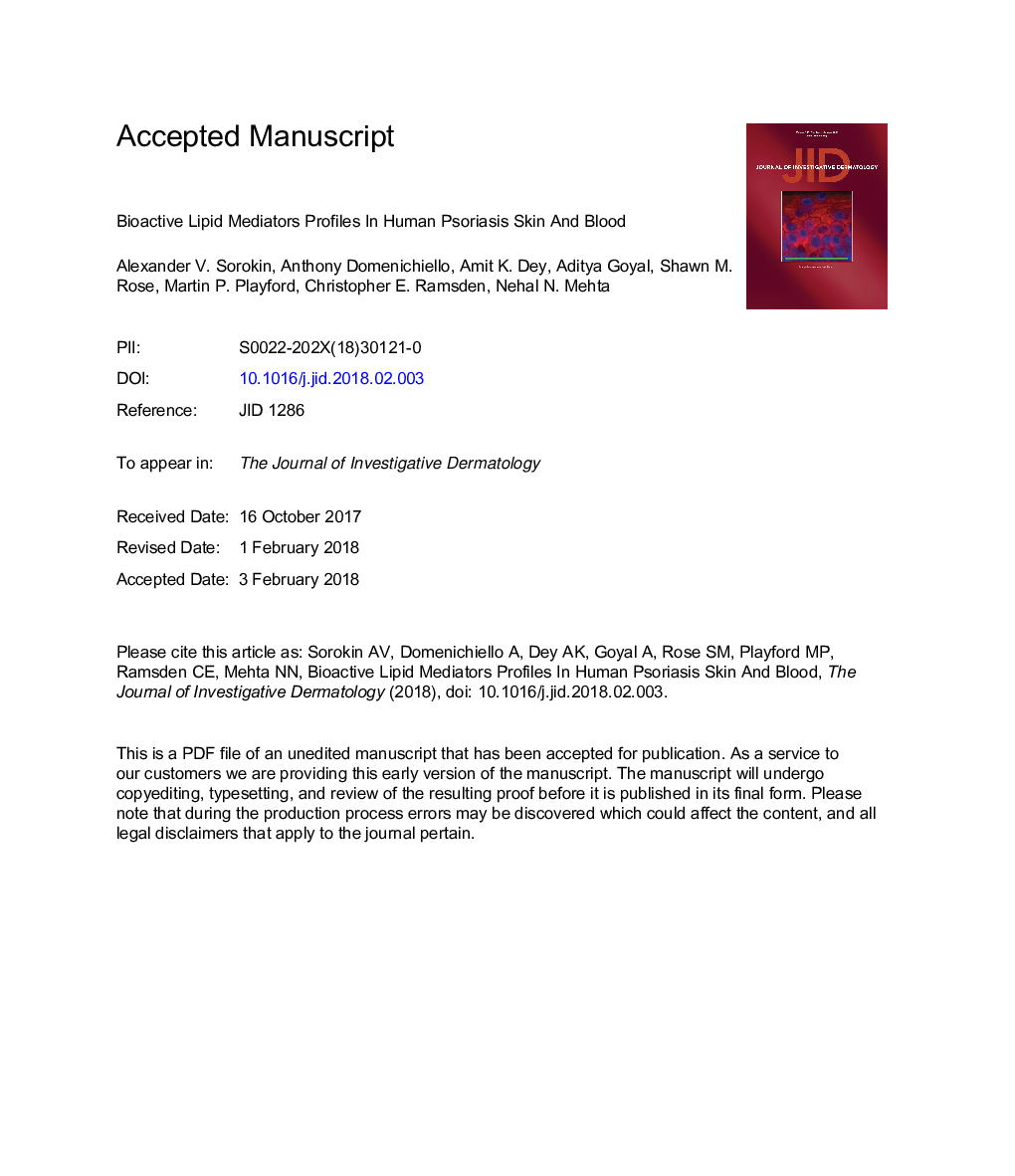| Article ID | Journal | Published Year | Pages | File Type |
|---|---|---|---|---|
| 8715845 | Journal of Investigative Dermatology | 2018 | 32 Pages |
Abstract
Psoriasis is a chronic immune-mediated disease that represents a unique model for investigating inflammation at local and systemic levels. Bioactive lipid mediators (LMs) are potent compounds reported to play a role in the development and resolution of inflammation. Currently, it is not known to what extent these LMs are involved in psoriasis pathophysiology and related metabolic dysfunction. Here, we use targeted and untargeted liquid chromatography-tandem mass spectrometry approaches to quantify LMs in skin and peripheral blood from psoriasis patients and compared them with those of healthy individuals. Lesional psoriasis skin was abundant in arachidonic acid metabolites, as 8-, 12- and 15-hydroxyeicosatetraenoic acid, compared with adjacent nonlesional and skin from healthy individuals. Additionally, a linoleic acid-derived LM, 13-hydroxyoctadecadienoic acid, was significantly increased compared with healthy skin (607.9 ng/g vs. 5.4 ng/g, PÂ = 0.001). These psoriasis skin differences were accompanied by plasma decreases in antioxidant markers, including glutathione, and impaired lipolysis characterized by lower concentrations of primary and secondary bile acids. In conclusion, our study shows that psoriasis skin and blood have disease-specific phenotype profiles of bioactive LMs represented by omega-6 fatty acid-oxidized derivatives. These findings provide insights into psoriasis pathophysiology that could potentially contribute to new biomarkers and therapeutics.
Keywords
EPAHDHAHODELC-MS/MSArachidonic acidEicosapentaenoic aciddocosahexaenoic acidLinoleic acidhydroxyeicosatetraenoic acidhydroxydocosahexaenoic acidhydroxyoctadecadienoic acidPolyunsaturated fatty acidPUFALOXEETDHAlipoxygenaseLow-density lipoproteinLDLHETELipid mediatorliquid chromatography tandem mass spectrometry
Related Topics
Health Sciences
Medicine and Dentistry
Dermatology
Authors
Alexander V. Sorokin, Anthony F. Domenichiello, Amit K. Dey, Zhi-Xin Yuan, Aditya Goyal, Shawn M. Rose, Martin P. Playford, Christopher E. Ramsden, Nehal N. Mehta,
